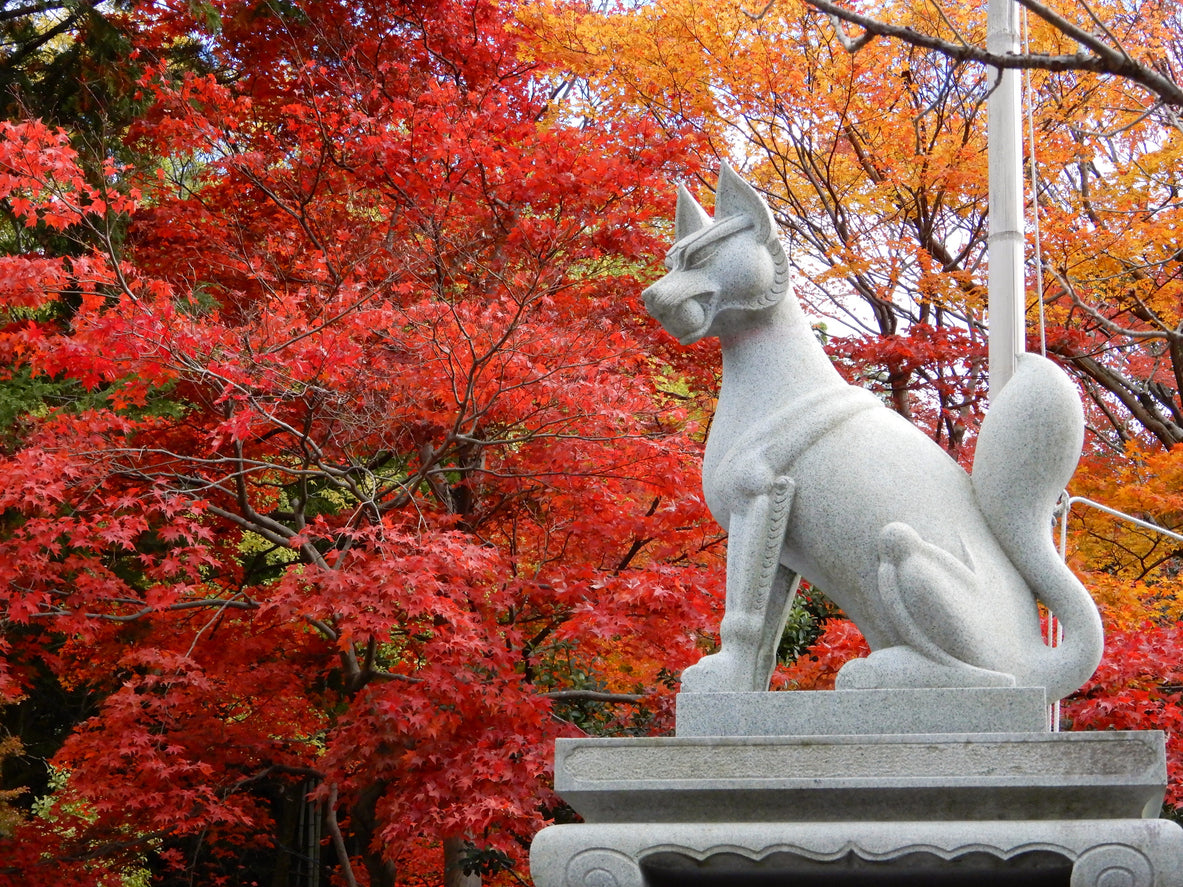Foxes, or "kitsune" in Japanese, hold significant cultural and spiritual importance in Japan. They are revered as intelligent, mystical beings associated with Shinto and Buddhist beliefs. Often depicted as shape-shifters, messengers, and guardians, they symbolize both mischief and wisdom, serving as a bridge between the human and spirit worlds.
Here are a few places in Japan where you can see and feel the presence of foxes or the atmosphere of Inari worship in West Japan.
Inspired to take a trip to Japan? We can make it happen.
Yutoku Inari Shrine, Saga
Yutoku Inari Shrine in Kashima City, down in southern Saga Prefecture, ranks among Japan's top three Inari shrines, alongside Fushimi Inari Shrine in Kyoto and Toyokawa Inari Shrine in Aichi Prefecture. Inari, a big deal in Shinto, is all about rice, wealth, and foxes, and folks come here to pay their respects. The shrine's perched on a steep hillside, with its main hall sitting high on wooden beams 18 meters above the valley floor, much like Kyoto's Kiyomizudera Temple. From there, a path winds through the woods, dotted with red gates and little shrines.

Yuda Onsen,Yamaguchi
Legend has it that a white fox once limped into town, seeking shelter after being wounded in a forest fight. It dipped its paw in the local hot springs, and boom! Instant healing and a touch of foxy magic in the water. Now, folks from across Japan flock to this enchanted spot for its healing powers. And to pay homage to the fox, there's a giant statue of it by the train station.
Kitsune Udon
While you’re in Yuda Onsen, why not have some foxy udon? The town fully embraced the fox tale, making it the heart of their economy. Tourists flock for hot springs, fox souvenirs, and grub like Kitsune udon—a local must-try. The term "Kitsune Udon" translates to "fox udon" or "fox noodles" in Japanese. Its name originates from a folk story where foxes delight in aburaage (deep-fried tofu), the primary topping for this dish. Udon, known for their chewy and soft texture, consists of thick wheat noodles, ideally enjoyed when freshly made.

Toyokawa Inari, Aichi
Okay, this one is technically not in West Japan, but borders it in Aichi prefecture. Toyokawa Inari, one of Japan’s Big Three Inari Temples alongside Fushimi Inari in Kyoto and Yutoku Inari Temple in Saga Prefecture, was founded in 1441 by the monk Tokai Geki. It's a unique blend of Sodo sect Buddhist Temple and Shinto Shrine, honoring Inari Okami, the deity of fertility, rice, agriculture, industry, worldly success, and foxes. Spread across 1,272 hectares, the temple boasts thousands of stone foxes and carvings.

Fushimi Inari, Kyoto
Fushimi Inari Shrine, a significant Shinto shrine in southern Kyoto, is renowned for its thousands of vibrant red torii gates lining trails behind the main buildings. These paths wind through the sacred Mount Inari's forest, reaching 233 meters in height, within the shrine grounds. With origins predating Kyoto's capital status in 794, this shrine holds ancient roots.

Inari Sushi
Inari sushi is a traditional Japanese dish consisting of sushi rice stuffed into seasoned pouches of deep-fried tofu called aburaage. These tofu pouches are typically sweetened with a soy sauce-based mixture, giving the sushi a unique combination of sweet and savory flavors. Inari sushi is widely available across Japan, commonly found in sushi restaurants, convenience stores, and supermarkets. It's a popular choice for bento boxes and sushi platters, offering a convenient and delicious option for both locals and tourists exploring Japanese cuisine.


